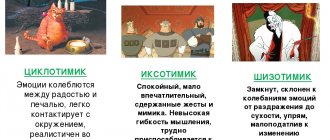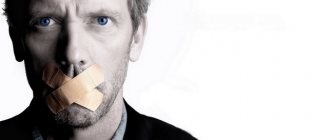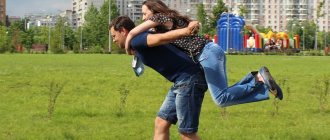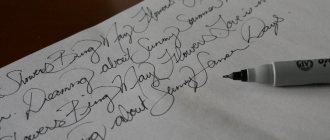Author: nikalatch
21 October 2021 12:35
Tags: eyes, psychology, it's interesting
6897
10
Usually our eyes “follow” our thoughts, and sometimes, just by looking into our eyes, other people can understand what we are thinking about, writes hypnosiscontrol.com. Would you agree that reading another person's thoughts through their eyes is a very useful skill? Thanks to this, everyone will be able to understand whether they are being deceived or determine whether your interlocutor is interested in what you are telling him about. Poker players master this useful skill perfectly.
0
See all photos in the gallery
"Eyes to eyes"
0
Such contact with the interlocutor indicates that he is very interested in talking with you. Prolonged eye contact may indicate that the person is scared and/or doesn't trust you. Brief eye contact means the person is anxious and/or uninterested in talking to you. And the complete lack of eye contact indicates the complete indifference of your interlocutor to your conversation.
×
Concluding remarks
- A forward gaze or unfocused and non-moving eyes are also considered a sign of visual evaluation.
- Typically, a left-handed person will exhibit the opposite sense of eye direction.
- As with other signs of lying, it is necessary to first find out and understand the basis of a person's behavior before concluding that he is lying based on the direction of his gaze.
Many critics believe that all of the above is just nonsense. However, practice shows that there is something in this. But who's stopping you from finding out for yourself? It is enough to make a list of questions like the ones above and offer them to friends and relatives who will play the role of test subjects. And then watch their eye movements and record the results.
Kvartina Daria Nov 10, 2021
Downcast eyes
0
By lowering our eyes, we show that we do not feel very comfortable or even embarrassed. Often, if a person is shy or does not want to talk, he lowers his eyes. In Asian culture, not looking a person in the eye and looking down when talking is the norm. These “rules” are generally followed by all of us. But left-handed people do the opposite: right-handed people look to the right, left-handed people look to the left, and vice versa.
Visual Assessment Keys - 'Lying Eyes'
To the best of our knowledge, the first use of the term “Visual Assessment Keys” was by Richard Bandler and John Grinder in their book Frogs into Princes: Neuro Linguistic Programming.
Based on their own experience, they found the following: When asked a question, a “normally organized” person (who is not left-handed) directs his gaze in one of six directions, as seen from the perspective of the person looking at him:
Up and left
Indicates visually created images (VS)
If one is asked to imagine a "purple buffalo", then while the person is thinking about the question, imagining a "visually created" purple buffalo in his mind, his eyes will turn in that direction.
Up and Right
Indicates visually recalled images (VR)
If you ask a person, “What color was the first house you lived in?”, their eyes will turn in that direction as they think about the question, “visually remembering” the color of their childhood home.
Left
Indicates auditory created images (SS)
If someone is asked to imagine the highest sound possible,” then when he thinks about the question, “creating an auditory image” of a sound that he has never heard, his gases will turn in that direction.
Right
Indicates auditory recalled images (ER)
If you ask a person to remember what his mother's voice sounds like, then when he thinks about the question, trying to remember the sound, his eyes will turn in that direction.
Down and left
Indicates sensations/kinesthetics (O)
If someone says, “Can you remember the smell of a fire?”, that is the direction their eyes will turn when they think about the question, remembering the smell, sensation or taste.
Down and right
Indicates own dialogue (D)
A person’s eyes turn in this direction when he “talks to himself.”
Why do we move our eyes, or why Paul Ekman is wrong
Many people have probably noticed that if you ask your interlocutor a question or ask him to imagine something, he immediately looks away. Anyone who has ever been interested in this issue knows about neuro-linguistic programming (NLP) and eye access signals. Popular psychology, led by Paul Ekman, likes to claim that moving the eyes upward to the right indicates that a person is lying. Is it really?
In 2012, a team of scientists from the UK and the US conducted a study that showed that upward eye movements to the right do not correlate with cases when a person is lying. Also in 2012, psychology professor Howard Ehrlichman asked the question: why do people move their eyes when trying to remember something? He called such eye movements non-visual, in the sense that they are not directly related to the perception of visual information, but are observed at the moment when a person is trying to remember something, imagine something, or perform a complex cognitive task.
Research on non-visual eye movements shows that people are more likely to look to the left in their daily lives. There are usually much more eye movements to the left than to the right. The results obtained by recording the electrical activity of the brain show that when the eyes move to the left, more areas of the brain are active, while when the eyes move to the right, bursts of electrical activity are more clearly localized and cover mainly the left frontal lobe of the brain. It is worth noting that it is classically accepted that eye movements to the left reflect activation of the right hemisphere, and eye movements to the right reflect activation of the left hemisphere. The fact that brain activity during eye movements to the left is not so clearly localized in the brain may indicate that eye movements to the left are less conscious, default and help us in monitoring space. It has already been mentioned that eye movements to the left reflect the activation of the right hemisphere, which is characterized by functions that help us navigate in space.
When an unexpected and difficult task appears before us, we begin to look away to the right, including the already mentioned left frontal lobe in the work. And, as is known, activation of the frontal lobes, among other things, is associated with the perception of a new or complex task, when additional attention and additional resources are required to solve it. Thus, eye movements to the left are always the default, and eye movements to the right occur when we are faced with a new or unusual cognitive task. It is likely that movements to the left also reflect emotional activation, as will be discussed below.
Downward and upward eye movements also have their meaning. Upward eye movements are associated with activation processes in the brain, or with active switching from one task to another. This is confirmed by the relationship between upward eye movements and an increase in the power of the theta rhythm in the temporal lobes of the left hemisphere. An increase in the theta rhythm in these zones is usually associated with the activation influence of the hippocampus, which leads to maintaining attention and focusing on the task. Most often, a person looks up when he is actively trying to retrieve something from memory. In turn, downward eye movements reflect emotional activation.
It is known that lowering the eyes down is usually associated with feelings such as shame, awkwardness, guilt, etc. Often, downward eye movements are observed along with leftward (downward left) movements. A relationship has been found between downward movements to the left and increased anxiety. Anxiety and negative emotions in general are more associated with the right hemisphere, and since we already know that eye movements to the left reflect activation of the right hemisphere, this relationship is not surprising.
All eye movements have a positive relationship with the activation of the parietal and frontal areas of the brain as measured by electrical activity. The main centers for controlling unconscious eye movements are located in these areas. Although, control of eye movements is not limited to only two zones, in fact there are more of them and all of them are not highly specialized, that is, they take part not only in the control of eye movements. Taking this into account, it can be understood that various processes, covering one or another area in the brain, entail (often as a side effect) eye movements. It becomes clear that talking about what exactly an eye movement to the right or left means (as is the case with NLP) is physiologically incorrect, since first you need to understand what processes and their totality in the brain they were induced.
Gestures of lies
Well-known experts agreed that when a person cheats, he performs typical actions:
- touches face with hands;
- covers his mouth;
- scratches the nose, rubs the eyes or touches the ear;
- pulls the collar on his clothes.
But all these gestures can indicate a lie only if there are other signs of deception. Therefore, the most reliable thing is to determine lies by the eyes, facial expressions, movements and behavior. By learning to diagnose lies, you can avoid the fate of the victim and always feel confident.
As practice shows, the person who frequently communicates with other people is able to accurately recognize lies. He must also be able to soberly perceive the situation and events, be attentive and try to notice all the nuances and subtleties of their behavior. Rich communication experience and the ability to analyze will help you correctly perceive all information received and evaluate its reliability.
Tell me everything first
Ask the liar to repeat his entire story from the beginning. If the story is fictitious, then it will be very difficult for a person to remember all the details that were present in it. You will immediately notice that the person will feel uncomfortable and agitated and will begin to fumble for words.
In most cases, it is very easy to tell when a person is lying to you. Simply because you literally feel it, and also know that this person cannot tell the whole truth one hundred percent. If you begin to more closely observe a person's behavior and movement during a conversation, you will begin to notice much more detail. Initially, you will most likely attribute everything to your “gut”, but you will soon realize that you have become more observant than you previously thought. By following these basic principles, you will not only be able to catch liars with ease, but you will also become more attentive and observant of the people you talk to.
Face
The first thing you need to pay attention to is the face. Muscle movements, facial expressions and facial expressions themselves will say everything for a person, you just need to pay attention to it
Engin Akyurt, unsplash
Muscle movement
There are facial muscles that every person is able to use regardless of their emotions. So, you can raise your eyebrows, expressing surprise, or tense the muscles at the corners of your mouth to force a smile. However, there are those muscles that will be much more difficult to use intentionally. These include the muscles around the eyes, which are responsible for squinting and wrinkles. They can be seen when a person experiences a feeling of joy or is truly happy. If the interlocutor breaks into a wide smile, and the eyes remain motionless and there are no wrinkles around them, we can assume that the emotion that the person is trying to portray is false. You can practice spotting liars by scrolling through the feeds of your friends on Instagram, who are smiling desperately in photos with their significant other.
Microexpressions
This is a facial expression that reflects a person's true emotions regarding a particular situation. Microexpressions appear literally for a split second and a professional specialist with a “trained eye” will be able to notice them directly during a conversation. But even a beginner can do this if the dialogue was filmed. In the future, you can slow down the recording and easily track the emotions that slipped through.
Muffled expressions
If in the previous case we talked about a person’s true emotions, which appear for an extremely short period of time, then this time we are talking about a facial expression that a person deliberately tries to hide. In most cases, inexperienced liars use a smile as a disguise. This is one of the simplest expressions a person can make, which is why lie theory places great emphasis on it. We have already discussed how to recognize a fake smile in the first paragraph.
Time of occurrence of expressions
The main difference between a false and real emotion is that in the first case all accompanying facial movements appear simultaneously, and in the latter - sequentially. For example, if a person pretends to be angry, he will first furrow his eyebrows, then tense his mouth and only then cross his arms; during real anger, all these actions would happen simultaneously.
Duration of emotion
Equally important is the time that an emotion takes. Real human emotions almost never last longer than five seconds or ten seconds. If a person has a frozen smile on his face that does not go away for a long time, most likely he is trying to hide contempt, anger or sadness.
"The best defense is attack"
Still from the film “Liar, Liar” / © Image Entertainment
If, during a conversation with a liar, you dare to doubt his information, be prepared for a counterattack - most likely, the hypocrite will portray the deepest indignation at your incredulity, and for the next few minutes he will assure that the person is more honest you won’t find him in the whole wide world, and then he will try to shift the conversation to other topics.
As a rule, people who tell the truth do not behave this way - they have no need to avoid “slippery” topics in conversation, so they are much less nervous and do not try to whitewash themselves in the eyes of their interlocutor, but calmly stand their ground.
Why is it so useful to learn how to read people?
The point is that the better you can evaluate those around you, the more the right people will be around you. In your personal life, this will help you weed out deceitful people, and in business, it will help you build business relationships correctly. And, in fact, it is not as difficult as it seems at first glance. It just naturally takes practice and experience. After some time, analyzing emotions, facial expressions and gestures, you will intuitively feel falsehood or, conversely, pure thoughts and a good attitude towards you.
Text:
Strengthening words in spoken phrases and counter-questions
Liars often raise their voices and emphasize specific words in the phrases they speak. “I’ve NEVER met this girl in my life!” In this way, liars try to make a person no longer ask new questions by developing a particular topic further. They try to show that they are absolutely pure in front of you, but most often this technique makes the whole story they tell even more implausible. Another common technique of a liar is to counter-question: “Where did you get this information?” or “who told you that?” Thus, the liar is trying to gain time to come up with an answer to your question, while you yourself answer his question.
The smell of sweat
© www.likar.info
Strictly speaking, if a person sweats, it cannot be said unequivocally that he is a liar. A change in the level of sweating is one of the main signs of deception during a lie detector test, but many people tend to sweat intensely when they are very excited or stressed, so the smell of sweat can only serve as indirect evidence of deceit, however, if a person not only suddenly sweats, but also blushes and he even started to stutter, either he is extremely anxious, or he is hanging noodles on your ears.
Fleeting grimaces
© www.desktopwallpapers.org.ua
To expose a person in a lie, carefully monitor the change in his facial expression - at the beginning of a conversation, liars often make mistakes, allowing true emotion to be reflected in their physiognomy: it can be a light, almost imperceptible half-smile or, on the contrary, an emphatically serious one grimace. As a rule, such “facial confessions” last only a few seconds, but they can tell a lot about the intentions of the interlocutor.
Some people subconsciously notice when a liar “takes off his mask” for a moment, but they are not aware of this and cannot explain what caused the sudden surge of mistrust. This ability is often considered a kind of irrational “gut feeling,” but there is nothing supernatural about it—after training on liars, anyone can become a walking “lie detector.”
Facial muscle tension
If you look at your opponent very carefully, you can figure out whether he is cheating or not. It will be revealed by micro-tension of the facial muscles, which lasts for several seconds. No matter how “stony” the interlocutor speaks, instant tension is still inevitable.
The deceiver is revealed not only by the position of the eyes when lying, but also by uncontrolled involuntary movements of the skin and other parts of the face. The most common include: quivering lips, rapid blinking, or changes in skin color.











